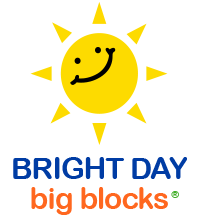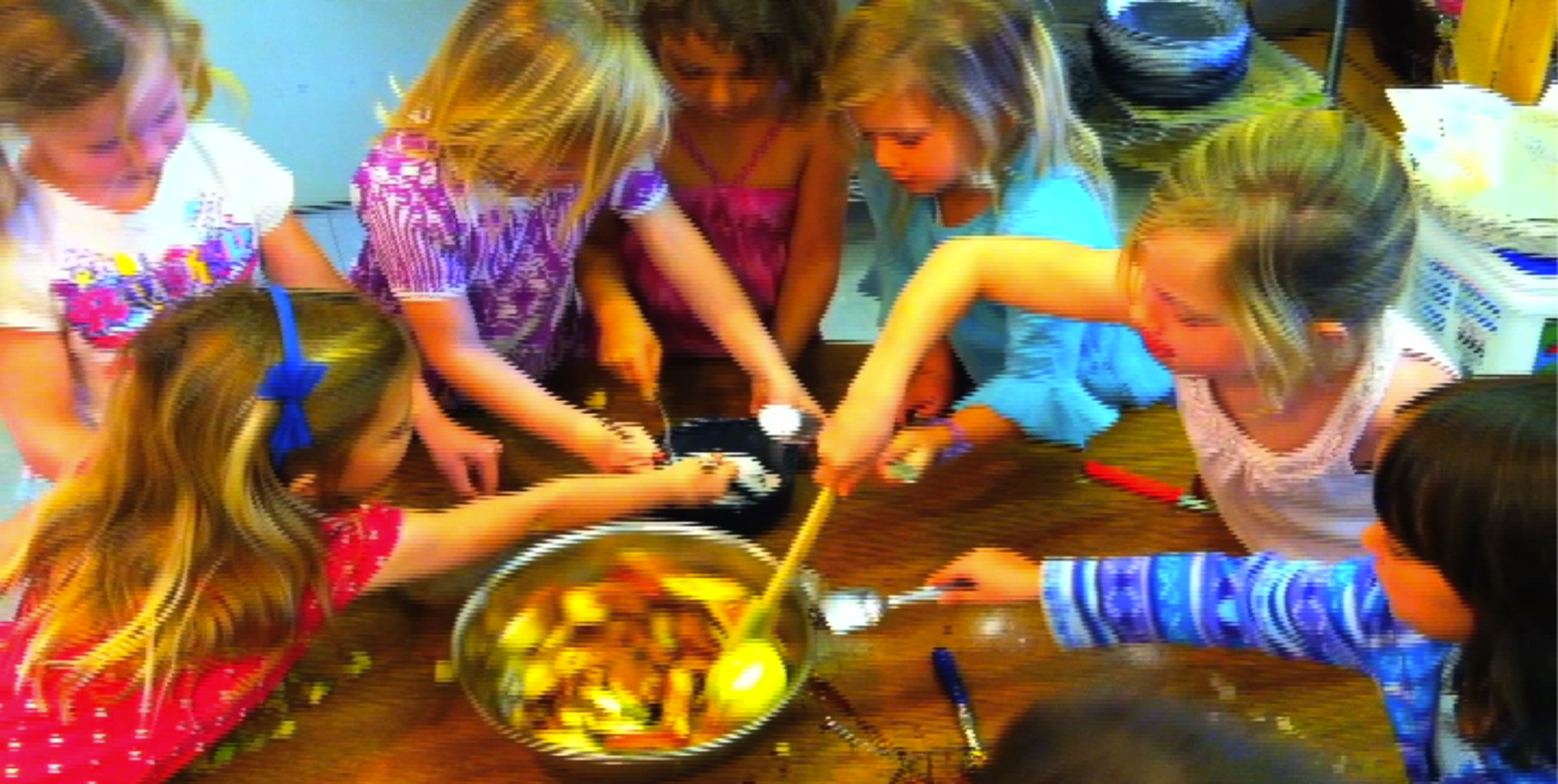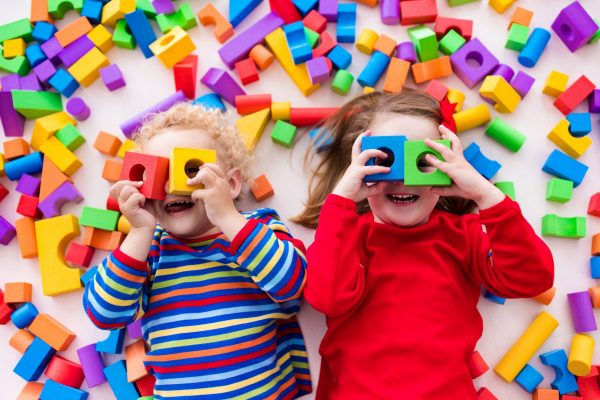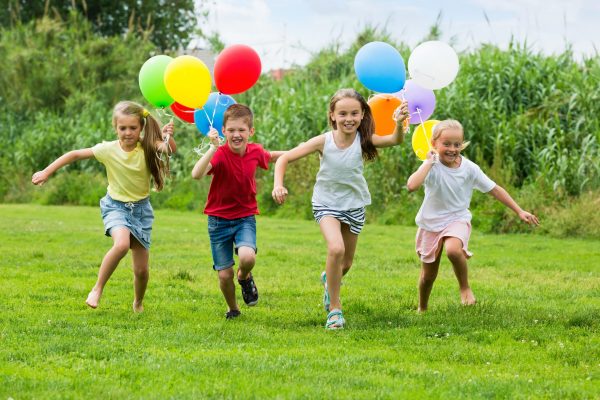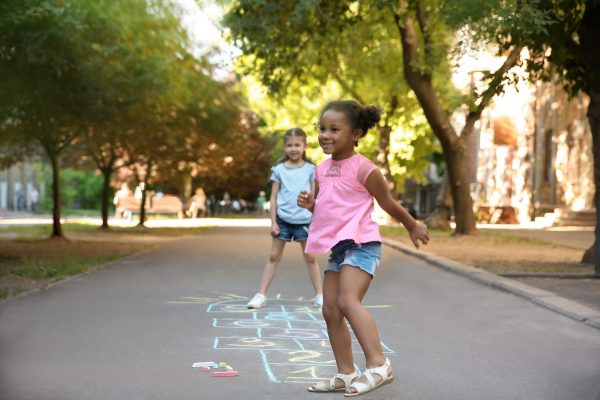Bright Day® Classroom Curriculum
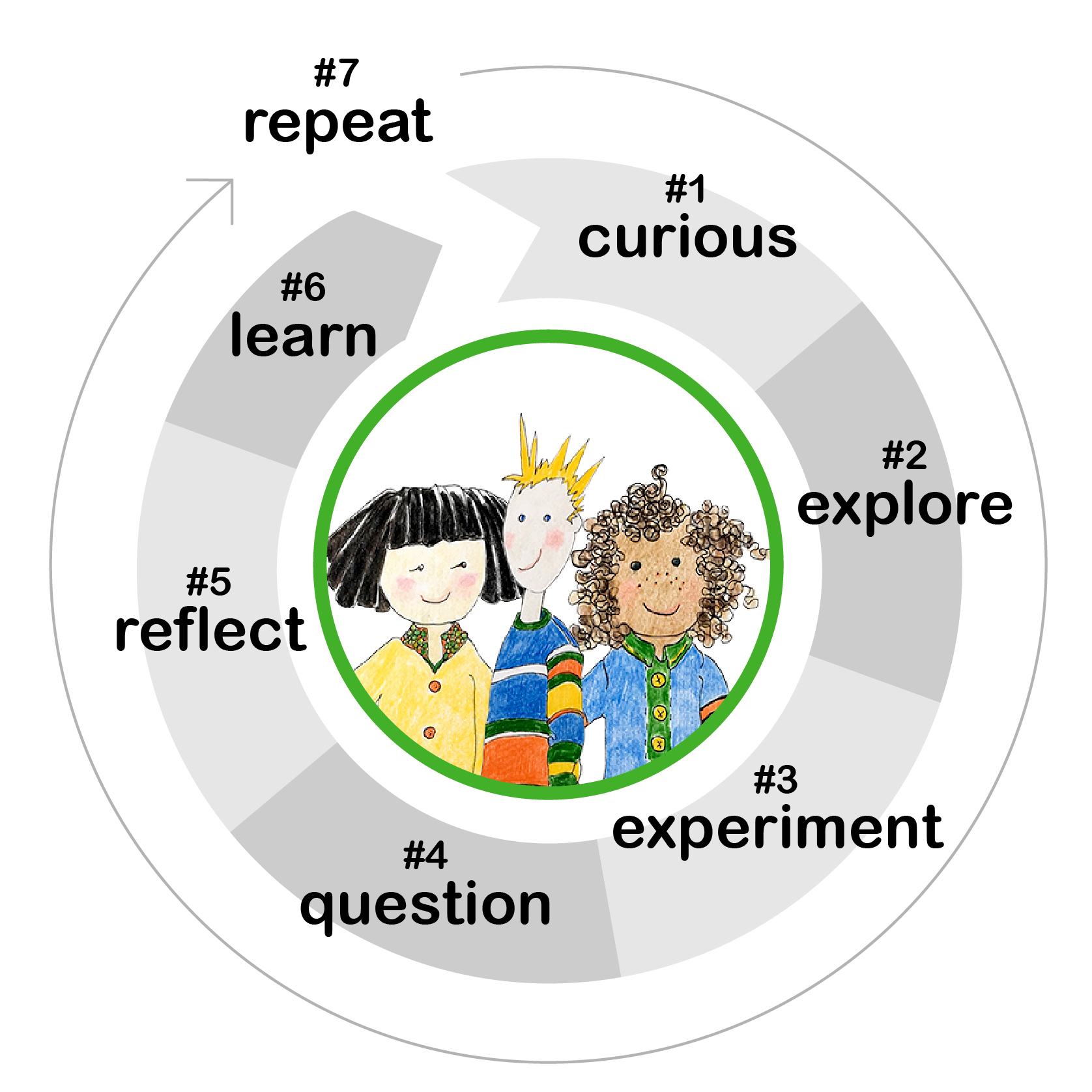
Building a more natural, sustainable way for preschoolers to learn!
Bright Day® Classroom Curriculum

Building a more natural, sustainable way for preschoolers to learn!

Bright Day Classroom Curriculum
Welcome to Bright Day Classroom Curriculum — our goal is to provide teachers and parents of preschoolers helpful tools to guide learning in their children from ages birth to 6 years. Together, let’s examine our approach to child development and learning – our philosophy, the benefits, and how you can engage.
It is no secret that preschoolers possess an enormous capacity for learning — from basic, yet important social skills to complex science concepts — all adults have to do is provide them a clear runway, and know how to support them.
Watch This Video!
We call this The Apple Pie Project.
You will see a preschool class of 3 to 5 year-olds working together — planning to make, preparing, baking and of course enjoying an apple pie.
You will of course witness 12 children having FUN — but what else is going on here as the kids progress through their project?
We will spend the majority of this Curriculum submission thinking about what these children are doing — what they are learning — why this learning occurs — and how this method of learning could likely be the most valuable experience for establishing a child as a learning being — someone that naturally gravitates toward learning — forever!
Philosophy + Curriculum – How It Works!
Guiding Principles ….
- Children have some control over the direction of their learning (child-directed)
- Children learn through hands-on experiences — exploring, asking questions, observing (active learning)
- Children build relationships with each other in their activities (collaborate, mentor)
- Children are given endless opportunities to be themselves (self-expression)
Our Curriculum – and its Influence ….
Our curriculum approach is guided by the Reggio Emilia philosophy of child development and learning.
The Reggio Emilia educational approach began in Italy in 1945, a time when the entire world was optimistic, confident, desired to improve, was willing to create anew and pursue positive change. This method of early childhood development was created and promoted by Loris Malaguzzi, a teacher and educational psychologist — who created schools for children 1 to 3 years — and also 4 to 6 years.
Although this approach may not be as well known in the United States as others, let’s say the Montessori approach — globally, the Reggio Emilia system and Reggio Emilia Inspired schools and centers are very highly regarded and supported by educators, engaged parents, and their community.
To read more about Loris and the Reggio Emilia system please visit: www.reggiochildren.it
The Seven Stages …
As illustrated on our circle illustration — which we call our Wheel of Learning™ – there are seven stages that occurs as any child moves through a pathway to learning:
- Being Curious
- Exploring
- Experimenting
- Questioning
- Reflecting
- Learning
And then of course number 7 is Repeat — repeating the process — learning more about that current topic — or, moving on to something entirely new to experience. And while moving to something new, connecting the dots between new and existing knowledge.
This system of learning is vastly different from traditional classroom methods, sometimes called subject or silo learning.
This new work can be defined as — long term, project based, centered on themes that children choose and easy to engage in.
It’s important for educators and parents to understand each of these stages and how each one contributes to helping young children learn and grow cognitively (brain), physically (body) and socially:
Stage 1. Being Curious … definition – a strong desire to learn more about something!
What did you need to know as a child (at age 3 or 4)?
Was it how an airplane floated in the air? – something magical.
Was it how to make an apple pie? – something delicious.
Using a child’s, or a classroom of children’s curiosities is a powerful way to set the stage for learning. As our system and the Reggio system has identified — child directed topics are a simple way to engage a classroom. Children having some control over the chosen theme or topic truly inspires them to be active in the classroom and the learning process.
Let’s stay with one of our favorite examples – The Apple Pie Project – as previously referenced …
- Why would children be curious about apple pie and the making of an apple pie?
- Because it’s delicious?
- Because they observed the complexity in the pies preparation at home?
- Because a classmate talks about apple pie almost every day?
Yes to all of these curiosities, and more.
What better way to learn about something — like making an apple pie — than to actually make an apple pie!
Can you now imagine children moving from curiosity (the idea) to exploration (the plan), and how exciting this would be for kids?

Stage 2. Exploring … definition – to examine or plan the situation, to begin to understand how + why!
Children love to study situations and try and develop a clearer notion of what is happening and why. They love to be given the opportunity to make plans, to begin putting things together.
Let’s carry forward the making an apple pie example ….
During this exploration, or planning process there is so much discussion, so much planning, so much work, so much collaboration.
- Do we want a sweet or a tart tasting pie – what kind of apples?
- Do we want a graham cracker crust – or a flaky crust of dough?
- Who is going grocery shopping (who is very organized)?
- How many bowls will we need?
- Who is in charge of measuring (who is best at numbers)?
- What is the temperature of the oven?
- How long does a big pie bake? to cool before eating?
The exploration is — planning out the recipe, the ingredients, the kitchen tools. Other areas of exploration are — roles and responsibilities (kids and teachers) — more.
Can you imagine the anticipation right now for the children — from an idea (curiosity), to a plan (explore), now on to executing the plan — experimenting with all the variables to make that apple pie.

Stage 3. Experimenting …definition – taking a course of action without really knowing the outcome!
Like everyone, children need to experiment to learn the correct way.
Remember being 3 years old and tying your shoe? – or completing your first addition problem completely on your own?
How many repetitions (experiments) before you actually got it right?
Back to the making our apple pie ….
The right amount of ingredients to make the pie crust, the right mixture for the apple filling, the right temperature for the oven, the right amount of cooking time, experimenting using a sharp knife, and dozens more tests and trials.
So again, the curiosity is — the idea of discovering how to make an apple pie?
The exploration is planning (as discussed) — planning the recipe, planning the ingredients, planning the tools, planning or defining roles, responsibilities
The experiment here is the doing, the deciding — having everyone working together — prepping the materials, combining the ingredients — trying and trying again, succeeding and failing — and failing again — and believing that the classroom of children are experimenting and learning to do and do it the right way together.
A great deal of ideas, plans, and decision making by the children have gone into making this apple pie. As this progression continues the kids will have lots of questions — and the questions will help continue the learning process.

Stage 4. Questioning …..definition – asking for help to clarify, and help to learn new things!
Every adult has experienced the questioning mind of a child, right?
How long, how big, and why, why, why?
And children pay attention to every answer — transfer it into their active brains — and try to connect answers they are given to other pieces of information stored to help them draw the conclusions and learn.
Just like the number of experiments it takes for a classroom of children to create and bake a pie (hundreds — right?). How many questions — either to another child or to a teacher does it take to keep this pie making project moving forward? (hundreds — right?) Most questions here attempt to explain the experimentation process — as examples — why about the apples, why about the crust, why about the filling ingredients — the sugar, the cinnamon, why about the pie pan, why about the oven temperature, why about the cooking time? — and so forth. Here the children ask questions to better understand, to help create resolution — and in doing so learn so much — building cognitive skills, social skills and physical skills.
At this point we have traveled through the idea, the plan, the execution of the plan, and asked hundreds of questions. The teachers and children now have time to reflect on their project, their accomplishments, and what learning is occurring and has occurred.

Stage 5. Reflecting …definition – take in and consider all the information – and think about it!
You may not believe that children reflect — because that sounds like more an adult concept. But kids are great at connecting, communicating and talking about what they did, what happened during their activities, and why these outcomes or results occurred — kids build beliefs and strong opinions.
At this point in the process let’s imagine the richness of the group conversation if guided by a teacher — one that attempts to help the children reflect on valuable, learning outcomes.
Well, that is what reflection in this stage of the learning process is about.
Let’s go back to our apple pie …
- The choice of Rome Apples (not too sweet, not too tart)
- 375 degrees for 35 minutes was not enough — 45 minutes is perfect!
- The need for a classmate that is really good at washing dishes
- 12 children in the class — how much pie so everyone gets a big piece
Teachers help children reflect on slightly more complex items…
Movement around the kitchen, safety in a smaller space, time, weights and measures. We can look at this as cognitive, physical and social development.
In an upcoming section we will explore the benefits children realize from this method of learning – and the developmental benefits are impressive.
Having an idea – planning the project – working – and thinking about what occurred – that’s our path to true comprehension and learning. Children build a thirst for knowing – and that drives their desire to find answers and solutions – this is a more natural way for anyone to learn.

Stage 6. Learning … definition – acquiring knowledge through experiences – being influenced or taught!
In the above reflection process teachers and their children reflect on the massive amount of information they have generated through a learning project — like making an apple pie from scratch.
As mentioned — a teacher will guide the class through areas that are significant, and will add to the knowledge necessary for preschoolers to prepare to move to a Grade 1 environment.
Through child-directed, project based, theme based, and play based learning these children in this classroom are exposed to:
- Literacy – reading, writing, storytelling, presentation – more
- Math – numbers (arithmetic), shapes (geometry) – more
- Science – measures, mass, volume, weight – more
- Art + Design – song, drawing, dance, color – more
- Social Behavior – manners, kindness, collaboration, self-confidence – more
- Physical – fine + gross motor skills, movement + balance, strength – more
Teachers that employ this method of teaching will say — learning for the children comes out of each project — it is not dictated from a book or a lecture.
In this method of teaching + learning teachers keep detailed records of what the class is learning as well as benchmarking each child’s progress.
Many classroom kids keep journals that identify what they are doing, how they are doing it, what questions they have, and what they are learning. These journals have notes, and many hand drawn pictures — and the kids visit their journals each day during their in classroom Morning Meetings to discuss and embellish.

So, let’s come up with the ideas we want to learn about — curiosity.
Then let’s plan out how we are going to act on this idea — explore
And, lets then test a variety of ways to get this project done — experiment.
Then, ask a lot of important questions to make certain we fully understand.
And finally, reflect on and learn from the experiences of the theme based project we just completed.
WOW — now this is the way preschoolers can learn!
Learning + Development – How Kids Benefit!
It is our hope that after tracking through our Wheel of Learning with us — and using a real life Apple Pie Project example — it becomes crystal clear how preschool children can learn through project based, theme based, and play based learning. Let’s look at the type of learning that can occur, as mentioned — Cognitive development, and as a subset of that — academic, as well as Social development, and Physical development.
Cognitive Development – building an understanding + knowledge of …
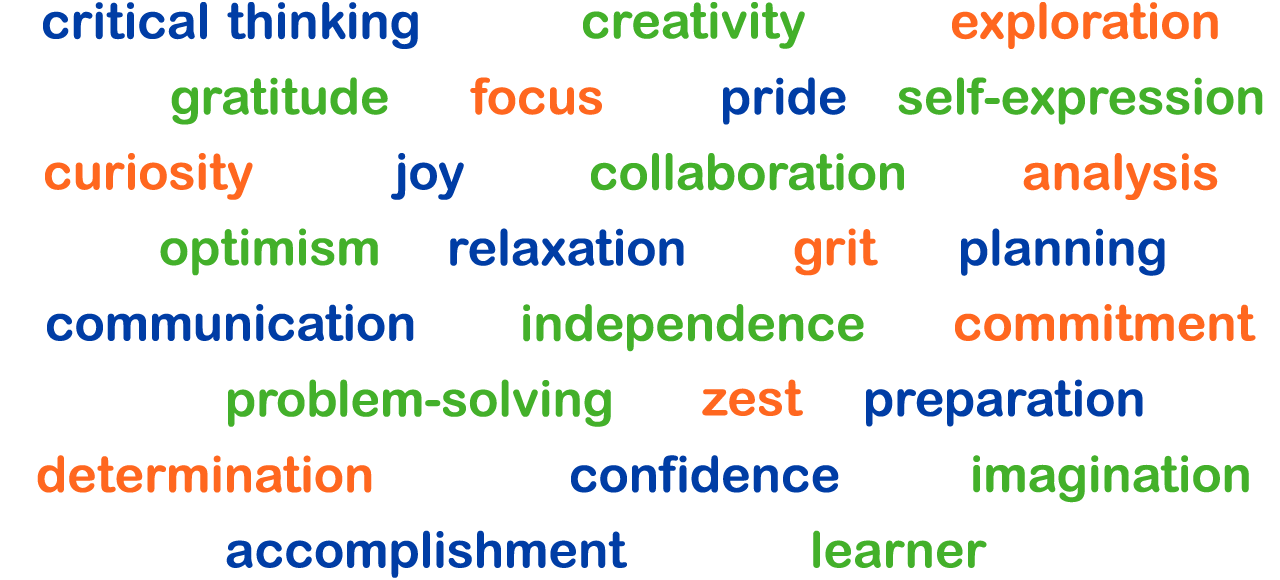
Academic Development – building an understanding of …
Literacy:
- Language, listening, vocabulary, comprehension, storytelling, letters, sounds, words, and expressive
Math:
-
Size, measure, shapes, weight, volume, length, quantity, numbers, sorting, fractions and vocabulary to describe.
Science:
- Observing, comparing, classifying, measuring, inferring, predicting, and communicating
Technology:
- Used in conjunction with keeping journals, creating art, writing, playing games, and reading projects
Art, Design + Engineering:
- Draw, dance, sing, play (instrument), perform, experiment, and improve
Social Development – building an understanding + practicing …
- Engagement, respect, control, cooperation, kindness, awareness, hygiene, nutrition, safety, empathy, and building a community
Physical Development – developing the body as follows …
- Active, fine motor skill development, gross motor skill development, movement, balance, strength, and dexterity
Each and every one of these learning benefits are found in our real life example of making an apple pie — and hundreds of other possible projects.
And, important to note — each of the children, and the entire classroom, including the teachers were 100% engaged in making this the best pie ever baked — which guarantees the level of learning was high.
This is an important moment in presenting our Philosophy, Curriculum, and the significant Learning Outcomes.
Because we believe … Most children would love to learn this way! Most preschool teachers would love to teach this way! Parents would highly value this approach — if only they only understood the approach and developmental benefits!
Right now it’s time — time to discuss how to bring this philosophy, this curriculum and this method of teaching into your Classroom!

Next Step – Making It Happen In Your Classroom!
Here we will discuss our play based learning Philosophy and Roadmap — including valuable guidance on building knowledge, creating the curriculum, the classroom environment, networking and launching the curriculum, reporting and improving the curriculum — and more.
We will continue here by drawing valuable linkage between what children are learning and their preparedness for their next education steps. And wrap up by showing examples of the learning in progress.
Our Philosophy …
What is the “it” in Making It Happen? Well, that’s the philosophy of the curriculum. As discussed at our beginning — there are 4 pillars to this approach — let’s revisit:
- Children have some control over the direction of their learning (child-directed)
- Children learn through hands-on experiences — exploring, asking questions, observing (active learning)
- Children build relationships with each other in their activities (collaborate, mentor)
- Children are given endless opportunities to be themselves (self-expression)
And as mentioned, this system of learning is vastly different from traditional classroom methods — this work can be characterizes as — long term, project based, and centered around play based themes that children prefer, thus easily engage in.
So, you are a believer — you believe in play based learning, you know it works — you know others in your preschool who are believers too — your administrators, teachers, parents — Hooray — good for you!
Now, how do you all make it happen — and not just a short term, quick fix, but the long term cultural shift in the way your classrooms are run. This result is not easy — it will not happen overnight. But, play based learning works — so the hard work to get to “it” will be well worth your effort.
As we progress through this Classroom Curriculum How To Guide let’s please keep in mind the Wheel Of Learning — the sequential progression of a children’s learning process — curiosity, exploration, experimentation, questioning, reflection, and learning – as well as the Apple Pie Project — and the 7 steps that occurred from start to finish. We will be revisiting all as we learn more about play based learning curriculum.

Our Roadmap …
You commit, create, collaborate, launch, report, fine-tune — and ultimately benefit from the results.
Your Pre-Schools’ current state of being — ranking from novice to near expert — determines your start point.
You can use this mult-step How To Guide to determine where you need to begin to achieve a play based learning system and culture for your children. In each of these steps we will attempt to cover program content items as well as program process items — both helpful in making it happen.
1. Study, become subject matter experts …
Our curriculum, as discussed is about children in charge, children active in hands-on experiences, children collaborating, children in a no barrier world. We pattern our curriculum after a Reggio Emilia inspired methodology, so it is wise to become subject matter experts in play based learning and that system. Please take the time to study!
Below you will find a good beginning of source material — which will lead you and your group to even more source material. Collect this source material, study with your group, personally reflect, discuss with your group, debate the principles and how they will apply to your preschool.
As you study and learn keep in mind the simplicity of the Wheel Of Learning and the Apple Pie Project — simple ways to ground yourself as you meet what might be more complex discussions about Reggio and play based learning.
Abbreviated Print Appendix (a great starting point):
Reggio Reference:
Hewitt, Valerie. Examining the Reggio Emilia Approach to Early Childhood Education”. Early Childhood Education Journal (publication).
Gandini, L. “Fundamentals of the Reggio Emilia Approach to Early Childhood Education”. Young Children (publication)
Cadwell, Louise Boyd. Bringing Reggio Emilia Home: An Innovative Approach to Early Childhood Education. Teachers College Press (publication)
The Hundred Languages of Children: The Reggio Emilia Approach – Advanced Reflections. Greenwood Publishing (publication)
Some Web Links as well:
The Reggio Emilia Approach – The Preschool Childs Languages of Learning.
http//www.reggioemiliaapproach.net/about.php
Reggio Children home page – http://www.reggiochildren.it/?lang=en
Play Based Learning Reference:
Study International Staff, Play-based learning for children encouraged by educators. SI News. Studyinternational.com

2. Create a core project team …
To create curriculum and affect organizational change you will need high ranking and respected individuals in your preschool to align and help lead the charge — those that are positive in approach, like minded in education philosophy, dedicated to doing the hard work required to launch a new curriculum approach.
Our curriculum aligns with Reggio in that the project team is always represented by the critical components within the school. The leader, the administrators, the teachers — as well as the parents — likely PTA/PTO member(s), and vested member(s) of the community (possibly key preschool sponsors). Collaboration and 100% alignment are critical.
In the beginning, best to keep the group small and powerful — small enough to gain alignment — but big enough to ensure all components are represented and all work will be completed on time.
This group should require no longer than a summer or school term (4 to 5 months) to both begin and conclude their work — otherwise such time will elapse that the project will wander, feel unimportant, and could end in failure. This is the most important project any preschool could undertake.
The work includes building the base of knowledge, defining the curriculum, defining the classroom environment, managing the project timetable, record-keeping, internal and external communication.

3. Plan your curriculum model …
This is the most important step of this multi-step process. Building the curriculum will shape the learning that occurs in your preschool from hereon in. Children will begin learning — Teachers will be supporting — Parents will begin understanding, appreciating, and applauding.
To review — this system of learning is vastly different from traditional classroom methods — this work can be characterizes as — long term, project based, and centered around themes that children prefer, thus easily engage in and enjoy.
Each project has a defined Goal. The goal for the children would be to engage, collaborate, and successfully complete the project (acquiring knowledge along the path). The teachers goal is to guide the children through the Wheel Of Learning (curious, explore … etc.), ensuring tie-back to important developmental areas – social, cognitive, physical — and more specific academic concepts like numbers (math), vocabulary (literacy), problem solving (science), mentoring (social) — and more.
The projects are introduced by the teachers based on the children’s interests. Teachers introduce the materials, questions, opportunities based on the interest of the children as a group and these projects are deeply explored. The essence of this relationship is one of child-initiated and teacher guided.
The curriculum topics that the teachers support are derived from teacher’s observations of their children’s spontaneous play and exploration. Because the children drive the topics and thus the projects the teachers are flexible, and are able to improvise with the children.
Remember the Apple Pie Project — perfect example here.
The Apple Pie Project began from a seed on an idea — was it about baking? nutrition? taste? use of a kitchen? Imagine the discussion that occurred as the children decided and the teachers guided.
Other themes that have led to projects among the preschool groups and have contributed to curriculum development have included:
- Outer space, planets, stars, rockets, robots, aliens
- World, land, oceans, volcanos, mountains, earthquakes
- Dinosaurs, jungle creatures, fishes + sharks, pets, zoo
- Sounds, nature sounds, music, musical instruments, city sounds, talking
- Transport, bicycles, cars + trucks, airplanes + helicopters
- Helpful places like hospitals, schools, police + fire stations
- Buildings like homes, skyscrapers, stores, bridges, train stations + airports
- Places in my neighborhood like parks, farms, playgrounds
- Healthy “me” like, cleanliness, food, exercise, rest
- Nature themes like seasons (winter, spring, summer, autumn), plants, insects, weather
Imagine the many more child generated themes — and based on the children’s desire to explore these themes via project work, the amount of highly engaged learning that occurs.
Making certain children are provided a forum by which they can initially decide on projects, and using that same forum as a daily touch-point within the preschool on project status and project progress is important. This forum is called the Morning Meeting. This concept helps teachers assess project status against the goal, build their lesson plans, and determine real-time next steps.
Morning Meeting occurs each day — toward the beginning of each day or school session — and average 15 minutes in length. As mentioned — they are the forum for discussing existing projects, and choosing new ones — and helping the teachers to keep everything on-track.
One project at a time? Yes.
How long does a project last? Typically more than one month, maybe two, but can be an entire school term, 3 to 4 months. The length of any single project is determined by the interest and engagement of the children. In other words — do the teachers believe the children are keenly engaged and benefiting and learning at an acceptable level from the theme and project. Often a theme will naturally flow into the next project — for example, Farm can lead to Food, Weather can lead to Nature.
Later on we will draw linkage between the activity of the theme based projects and the knowledge building occurring by referring to our Wheel of Learning (curiosity, exploration, experimentation, questioning, reflection, learning)

4. Plan your environment …
This is the second most important step in this multi-step process. It’s all about improving the surroundings — your classroom setting. This is a must to enhance teaching and learning.
In ours — as well as the Reggio system — the classroom setting or surroundings are often called the Second Teacher.
The goal here is to create new spaces — and redesign existing ones.
Facility cues like open spaces, indoor and outdoor spaces, natural light, numerous windows, plenty of reflecting mirrors, doorways which enable easy and convenient movement, indoor center plazas, outdoor courtyards, access and use of a kitchen.
It is important for there to be indoor and outdoor spaces designed for larger group projects — as well as for smaller spaces for individual or small group work.
Productivity cues like photographs of the children, finished samples of their project work, displayed current, on-going project work, organized containers of materials — project materials — for example: found materials like rocks and wood collected on a nature hike — or, purchased materials like paint, clay, paper. Keeping materials exposed and within reach of children is important — theses provide stimulus for ideas.
Also important to frequently rearrange the spaces and storage areas — to keep a new, exciting, fresh feeling to the environment.
All common areas — classrooms, workrooms, lunchrooms, bathrooms are all tidy, clean, well-organized, and simply invite community.
Some schools operate in limited space — it matters less about total size of space and more about how that available space is organized — to best enable exploration, engagement, and getting the project work completed. Throughout the space there should be maximum opportunities for children to interact and teachers to observe and guide as needed.
To preschools just starting out – installing such an environment might feel daunting — however, use these as guidelines and work within the space you have or can secure. Please remember, nothing is finished — all is evolution — if you understand where you are heading you can improve your space a bit each day, each week.

5. Expand beyond the core team …
The intention here is to invite the other key members, or your remaining school community into the curriculum and environment discussion and decision — administrators, teachers, parents, and key community members.
If your preschool is small, say 5-10 administrators and teachers you may have already included all, which is great — if your preschool is large, say 50-100+, it’s critical at this point to begin to inviting others into the process and upcoming change of curriculum — it’s time to build final consensus.
Timing wise we advise that approximately 4 months is a good guide to use to create and launch new curriculum in your system:
- Core team creation – 3 months
- Network and finalize – 1 month
- Launch curriculum!
Understand it will take more than a day, a week, maybe even a bit more than a month to convey the work the Core Development Team has accomplished — so, please give yourselves the time needed to work with your school community to present, discuss, debate and final decide.
Note: this step is more of a process guide — actual time to communicate and integrate should be decided by your preschool itself and your Core Project Team.
6. Finalize and Launch …
Everyone knows — everyone in your school community is in-the-know, and excited to begin.
Teachers trained — Teachers are ready to begin managing this new approach.
Launch New Curriculum Approach — this ALL begins with that first Morning Meeting – something new and exciting is happening — beginning today!
Morning Meetings — each and every day — Children will be ready to participate — Teachers have to be ready to manage the process — the flow.
Philosophy becomes key when discussing at your school — discuss your philosophy and approach daily with everyone — build your vocabulary to make sure your discussions and communication are clear:
- Child directed
- Engagement leads to natural learning
- Teacher guided
- Play, theme, project based
- Long term projects
- Linkage between projects and academics
- … more!
Re-launch each year — there are hundreds of reasons that this approach needs to be re-launched — most important to note — Administration and teacher turnover, if you are adopting a culture of play based learning — it has to be adhered to and monitored to make certain it is properly managed. You do not want to lose your way — finding a better way for your children to learn is about establishing and improving.
Note: this step is more of a process guide – how exactly you launch the curriculum in your school should be decided by your preschool and your Core Project Team.

7. Track / Report on Progress …
The use of a play-based methodology and curriculum is what we call a Managed Process — it does not run itself, but rather is fueled by the dedication of the teachers and the energy and zeal of the children. Here are some key triggers to making it work from day one and on-going:
Morning Meetings — these meetings enable children to express (what are they doing? what are they learning? how they feel? — and more). These meetings provide teachers the opportunity to gauge progress, plan activities (focus), look for cues to future projects — and more.
Children’s journals — most children love to keep a journal, their book of notes, thoughts, ideas — comprised mostly of words and drawn pictures. As the children create journal entries they love to tell their classmates what they are thinking and doing and what they plan to do next — storytelling.
Teacher tracking — Teachers both informally and formally track the activities of each child — parents want to know what their children are doing, what they are working on, what they are learning, etc. So a well prepared teacher has tangible and intangible examples to share with preschool administrators and parents of their assigned children.
Parent conferences — Teachers value discussing the status of a child’s development with that child’s parents. The formal and informal tracking done by the teacher — as the teacher follows the child’s activities in the current project(s) being worked on — provides valuable insight into the child’s Cognitive, Physical, Social and Emotional development.
Note: many parents continue to operate within an education model that drives them to express a need to review how advanced their child is — in let’s say for example: math and reading skills. These conferences provide a perfect forum for the teacher to share with the parent how their preschool child is progressing in the understanding and use of numbers (math concepts) and the understanding use of words (building vocabulary > reading) — key fundamentals leading to a true understand of math and reading. The conferences also can help educate the parent on the philosophy and value of the play-based learning methodology – and encourage them to support and spread the word!

8. Continuous program improvement …
As discussed above — this play-based methodology and curriculum is a Managed Process — and can, should and must be built upon and improved each day. The goal here reflected in the notes below is to improve the program through building knowledge and experience in running the system or curriculum.
Observe and listen — of course the teachers listen to the children and take the curriculum cues from them. But to improve the overall approach at your preschool lots of connecting points and lots of listening has to be created by the adults — the community, the parents, the teachers, the administrators of the school. Project progress comes from positive energy — and the energy will come from the advancement of the children (of course), and the time and attention provided by the involved and engaged adults.
Continue to learn (Philosophy) — there is plenty to learn — existing and new knowledge — regarding best practices in play-based learning and related curriculum. Each week we, Bright Day Foundation, identify new schools, many preschools that are eagerly pursuing the positive path of child-directed, play, theme, project based curriculum and learning. We suggest scanning the internet for preschools or Pre-K and kindergartens in your region and around the world that follow the principles of play based learning. Begin building your own Best Practice network of schools — and with them share ideas, discuss challenges, and solutions.
Be Brave, Be Bold (when seeking improvement) — Children are amazing beings —and often times more advanced than adults’ realize or give them credit for. Children love experiences, love to experiment, new “things” are often embraced. And, important to note — as children have the capacity to take on new experiences — and as they do they learn and grow significantly.
So you, a teacher or engaged parent can be brave and bold when working with your children and improving and advancing your curriculum. Children love to go new places (field trips), they love to get wet (bring an extra change of clothes), they love mud and sand (mud is easy to find), it’s okay to be covered in paint — soap and water cleans kids and clothes. All of the notions add to the improvement of a preschools curriculum. If children are excited they will learn — if children are engaged they will learn — be bold and brave when choosing your projects and activities and your children will blossom like the gardens they are growing (on your make-believe farm — right?)

9. Appreciate, Enjoy the Benefits …
Appreciate your hard work — observe carefully — and continue to work hard to define your practice and its benefits — so you can share with parents — and others.
10. Share the knowledge – help other schools improve …
Helping others — it’s just part of what we do; it’s part of the culture of any preschool — so helping other preschools or community organizations better understand the principles of play-based learning, helping them understand the benefits, helping them understand how to get started in their organization — helping them integrate process that enables program progress — and helping them a by offering a friendly hand — all is important — collaboration and support.
What teachers say — we, the Bright Day Foundation, speak with teachers each day about play-based learning. What we hear is:
- Teachers want to teach using this play-based learning method — a drawback is there are inconsistencies about how to accomplish this — how to incorporate a working standard (practice) — and how to gain consensus to follow the approach within a preschool organization.
- Parents need to better understand the concept of play-based learning — and how it creates stimulation and a more natural way for children to learn — how this way could actually be THE WAY to best aid children’s cognitive, social and emotional development. We are told very few parents are aware of and appreciate play-based learning — so someone has to create simple tools to educate the parents on the why and the how.
It is our hope that Bright Day Classroom Curriculum will begin to form a learning framework that will help teachers better understand the approach, then collaborate and assist preschools to execute such a program with their children — and in doing so better educate the parents about the amazing benefits!
Important: Can play-based learning be linked to today’s more traditional approach to learning?
Watch This Video, Again!
Please take another 3 minutes to give a second look to our Apple Pie Project video.
During your first viewing of this video you saw FUN — you saw busy children involved in an activity they are enjoying.
In your second viewing — right now — after reviewing this Curriculum guide — hopefully you see much more.
We hope you see: a perfect example of play, theme, and project based learning — children demonstrating the Wheel of Learning: curiosity, exploration, experimentation, questioning, reflecting and of course learning.
We hope you see the tangible benefits such as developing self-expression, creativity, deep engagement, problem solving, collaboration, communication, self-confidence, pride — and more. We hope you see the skill building in math concepts, science concepts, literacy concepts (vocabulary building — reading and writing), artistic skills — more. We have watched this video a hundred times — maybe watch it another time, please — and think about what the children are learning — how much FUN they are having learning — and how this builds an appetite for learning even more!
It’s Happening – In The Classroom …
Below you’ll find more real life examples, from real Children, creating projects, working every day on them, reaching goals, learning and building a true love for learning!
Our Picture Gallery …
Our Curriculum Co-Authors …

Our Curriculum Partners …

Collaborate with us on curriculum, get your organization involved, visit us at www.brightdayfoundation.org, contact us at david@brightdayfoundation.org.
